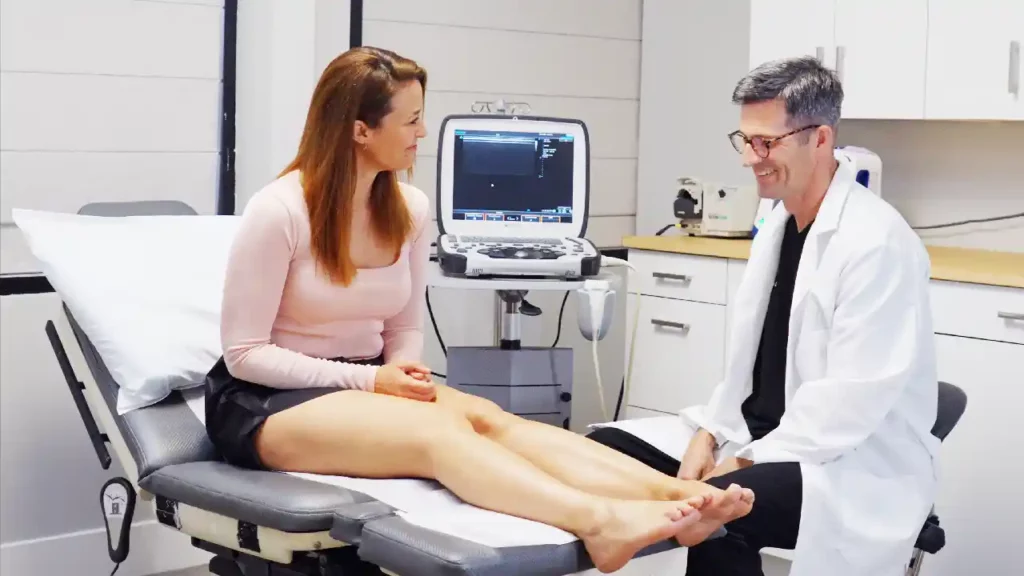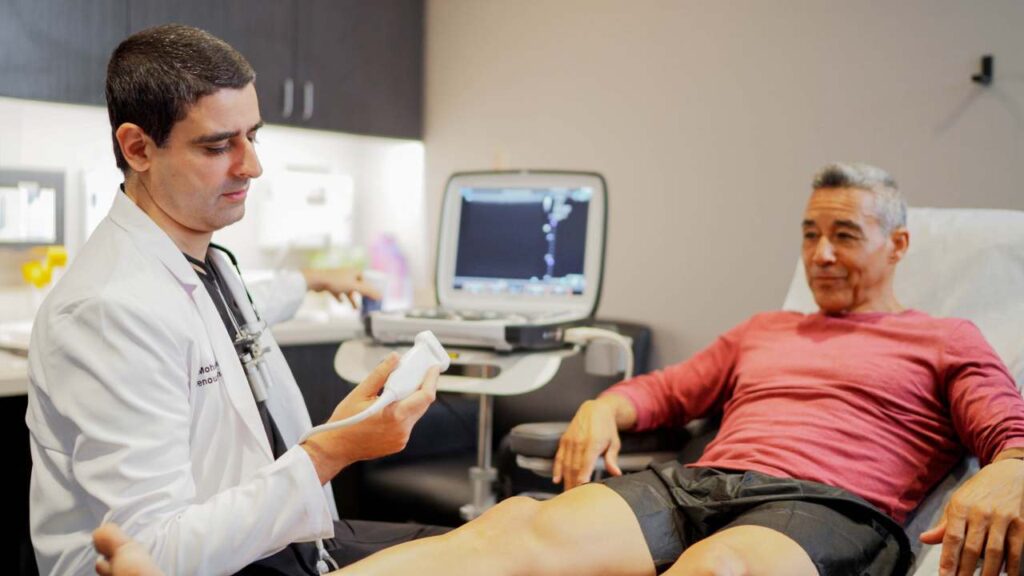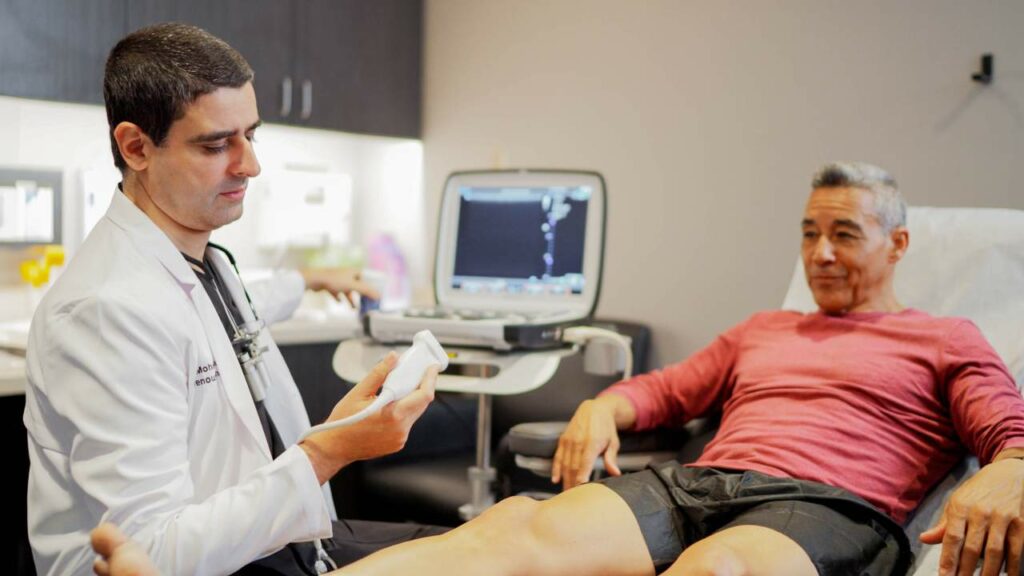You may have gone to your annual check-up or made an appointment with your family physician because you were experiencing aching legs, visible surface-level spider veins, varicose veins or other related symptoms, so your primary care doctor recommended that you go to a vein doctor near me CA for specialized vein treatment. When you’re entrusting someone with your health, especially when it is someone new in a field that you aren’t very familiar with, it is important to take a look at who exactly will be treating you and what they do.
A vein doctor is called a phlebologist, and they can come from a variety of fields of medicine, including cardiology, anesthesiology, and emergency medicine, as long as they have the proper training to treat veins. Back when the only viable treatment option for vein disease was surgery, the only doctors who had the training and knowledge to treat veins were vascular surgeons. However, in the wake of minimally-invasive innovations, all sorts of doctors can be trained to become venous specialists
The best way to evaluate a phlebologist is to go to the clinic’s website and read up on their qualifications, success stories, and patient testimonials. It’s important to find a vein doctor who is highly trained and experienced with ultrasound and minimally invasive procedures so that you can be sure that you are receiving the highest standard of vein care. It is equally important that you seek a vein doctor who is compassionate, understanding, empathetic, and able to communicate with you effectively at all stages of treatment.

The symptoms of vein disease are subtle, but get worse over time, and can be confused with the normal aging process, so if you have a significant number of visible veins, you should make an appointment at a vein center to see a vein doctor who can help you figure out if you have a vein disease and if you need vein treatment.
When you go to your appointment at a vein clinic, the vein doctor will first try to gather a complete family history and physical picture of your health by first asking you about your symptoms and determining if you have any risk factors. Then the vein specialist will conduct a physical examination to search for unhealthy veins, then get imaging done of your legs if he or she suspects that you might have venous insufficiency.
The best form of imaging for vein disease is Duplex Ultrasound. It combines Doppler, which lets the doctor see the speed and direction of blood flow in a blood vessel, with conventional ultrasound, which displays black and white images of the inside of the body, to provide the doctor with a lot of important information about your veins.
The ultrasound technician will start out by looking at the deep veins in the legs to ensure there
are no blood clots, then scan spider or varicose veins that are causing pain or irritation.They will also make sure the valves in the saphenous veins (GSV and SSV) are working by checking that the blood is flowing in the correct direction.
Before your appointment for a Doppler ultrasound at a vein treatment clinic, we recommend that you drink a lot of water on the day of an ultrasound. The more hydrated you are, the larger your veins will be, which will make it a lot easier to see venous reflux on the Doppler ultrasound. Caffeine actually does the opposite and makes your veins constrict, so we would suggest that you avoid drinking any coffee, tea, or soda before your appointment.
At your vein treatment appointment, you will get the ultrasound done in a warm room while standing to maximize the amount of blood in the veins in the legs, which makes the blood flow and speed a lot easier to see on the ultrasound.
As mentioned before, the only surefire way to treat vein disease is to seek medical treatment from a vein doctor at a vein treatment center, so after you have been diagnosed, what are your options?
The best spider vein treatment available at a vein clinic is sclerotherapy, a non-surgical minimally-invasive treatment that uses tiny needles to inject small amounts of medicine into the veins to significantly improve their appearance in just a month. The whole procedure takes less than a half-hour and causes little to no discomfort. You can return home or back to work right after the procedure because there is no anesthesia or recovery time involved.
For varicose veins, you have three options that the vein doctor may present to you depending on your specific diagnosis: VenaSeal, varithena, and radiofrequency ablation. All of these treatment options essentially seal off any diseased veins that are causing blood flow issues in order to allow the blood to redirect through healthy veins. They all take less than a half-hour and cause minimal discomfort. You can go home or back to work after the procedure at the vein treatment clinic because there is no anesthesia or recovery time involved.
VenaSeal is a vein adhesive that is used to seal the saphenous vein in the leg that causes varicose veins, and doesn’t require any local anesthetic. The VenaSeal glue closes off the diseased vein almost immediately, and this seal will block the blood flow through that vein and eventually reroute it through the healthy veins in your legs. Varithena is a sclerotherapy foam that is injected into the vein to reduce the appearance of varicose veins by sealing off the damaged veins to reroute blood flow. Radiofrequency ablation, a non-surgical minimally invasive treatment, starts with the administration of a local anesthetic, followed by the insertion of a small catheter into the unhealthy vein using ultrasound. to deliver a harmless heat energy to the vein walls, causing them to close down.
Be sure to avoid vein centers that recommend endovenous laser ablation, which uses laser light to cause inflammation in the diseased vein that leads to a seal that eventually reroutes blood through other healthy veins. Even though this description sounds quite similar to the previous ones mentioned, this treatment comes with a week-long recovery time, during which you would have to wear a compression stocking, and experience a lot more pain and discomfort.
It’s important to find a vein doctor who is trained in minimally invasive procedures so that you can be sure that you are receiving the highest standard of vein care. If you are in California, Dr. Jasmine Koo at the San Diego Vein Treatment Clinic is highly experienced and well-versed in vein care. She is kind and approachable, and prioritizes patient care above all else, as she strives to provide everyone who sets foot in the vein treatment center with a pleasant visit.
Dr. Koo specializes in minimally invasive treatments for spider and varicose vein removal, and is an expert in the field of venous reflux disease. She earned her M.D. from Chicago Medical School, and completed a fellowship at the University of Texas Interventional Radiology Department in minimally invasive procedures. She would love nothing more than to provide you with the highest standard of care with cutting-edge minimally-invasive treatment and compassionate professionalism.
Our clinic in San Diego is located in a beautiful neighborhood called La Jolla, near the Torry Pines Beach State Park and Westfield UTC Shopping Center. End your search for a “vein doctor near me CA” and set up an appointment to come visit us! You can call our office, where a friendly staff member would be happy to speak with you, or book an appointment online.





